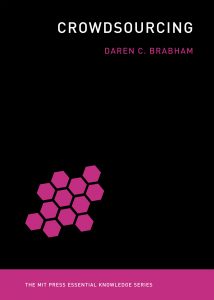
Crowdsourcing is a review of the academic research focused on the (seemingly) new phenomenon by the same name. This book is part of the Essential Knowledge series from MIT Press, which consists of other high-level reviews of prominent topics like Machine Learning, Artificial Intelligence, and others. It is an excellent primer for those looking to gain conversational knowledge of the practice and leads to further reading on the subject.
Brabham regularly discusses open source as a distinct model from crowdsourcing. In fact, he dispels the idea of three types of participation culture as crowdsourcing: open source, marketing voting contests, and (even) Wikipedia-like movements (which I don’t know that I wholly agree with). Despite his repeatedly made distinction, I’ve seen many of the elements of “true“ crowdsourcing within the open source participation culture. At Mozilla, in particular, what was once a more bottom-up organization (the defining distinction, according to Brabham) has become increasingly top-down. Some areas of Mozilla have retained the bottom-up practices (e.g., Rust, MoCo Advocacy), but many have been gradually shifting upward.
What I liked most about this book was that it validated many of the questions that I regularly ask about community and notes that there have been no definitive answers to such questions. In fact, he notes that while many have been researched, many lack significant research. Motivations of the community, for example, has been researched extensively, however, recruitment and retention of community members has virtually no research. Brabham also dispels some of the myths that I’ve worked to dispel throughout most of my career, such as:
- [MYTH] Communities consist only of amateurs,
- [MYTH] Extrinsic motivators are stronger than intrinsic motivators,
- [MYTH] Quality of the amateur community is lacking, especially when the community is untrained in the field they’re participating in,
- [MYTH] Crowdsourcing is a cheap and efficient way for organizations to accomplish most tasks.
I recommend this book to anyone who has heard the term, “crowdsourcing.” It provides an essential framework for discussing the practice in professional and social settings.
